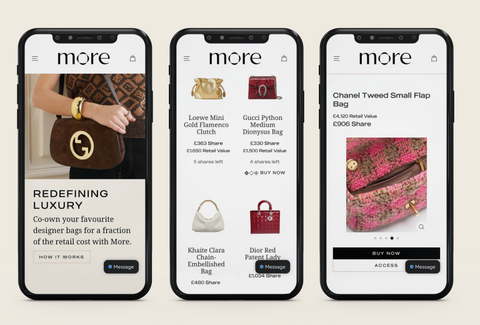This Week's Obsession: Let's Get Phygital

The rise of 'omnichannel retail' emerged in the early 2000s, showcasing the strategy of selling through various online and offline platforms. Its popularity soared in 2005, as revealed by Google Trends, and has since evolved to encompass diverse marketing tactics and modern mediums like smartphones, social media, and gaming. However, its widespread adoption has led some to deem it on the brink of becoming outdated.
Transitioning from 'multi-channel' to 'cross-channel' and eventually to omnichannel, the industry now embraces innovative concepts like 'Phygital' - a fusion of digital and physical realms, alongside the integration of customer identities. This shift emphasises the consolidation of data and customer engagements, all securely stored in the cloud, as highlighted by experts like Garf and Chen.
Phygital retail encapsulates immersive experiences where virtual and physical realms intertwine. Imagine exploring a virtual store that blends elements of traditional retail with gaming, unlocking digital identities or twins for products, and embarking on customer journeys seamlessly blending the digital and physical worlds. Customers can scan products for augmented reality filters or exclusive discounts, purchase luxury items through token-gated platforms, and even engage with brands based on their collectibles stored in crypto wallets. The innovative concept of Phygital, championed by experts like Chen, focuses on digitizing goods through blockchain technology to streamline authentication processes and enhance sustainability. As mixed reality devices like smart glasses from Meta and Amazon, as well as mixed reality headsets from Meta and Apple, gain traction, the potential for deeply immersive digital experiences that strengthen emotional connections with consumers is vast.
This evolution in retail experiences, combined with the ongoing exploration of Web3 and gaming, promises to revolutionise fashion engagement by fostering community connections, offering digital products, and building lasting loyalty beyond traditional discount-driven strategies.
Chen coins it as "TikTokification", extending its influence beyond the Bytedance-owned platform. He refers to it as the shop model: 'S' for short-form video, 'H' for humanization, 'O' for Omni 4.0, and 'P' for proprietary. Similar to Amazon's transformative impact over a decade, TikTok is reshaping consumer behavior. Interestingly, while social media plays a vital role in generating demand, the actual shopping experience, such as making a purchase, remains somewhat elusive. Chen acknowledges the existing challenges related to the point of purchase and attribution, particularly in the context of TikTok Shop.
In a more optimistic light, emerging business models and technologies are not solely focused on growth but also on waste reduction, emphasizing a harmonious blend of technology and sustainability. Hilsum highlights the significance of digital product passports, impending European regulations aimed at enhancing transparency in product sourcing, along with the enforcement of cotton-sourcing regulations in the US and manufacturing standards in China, all driving transformative change in the industry. These shifts prompt companies to reevaluate their approaches to design, sales, and inventory management, with a growing emphasis on sustainable practices and innovative solutions that empower consumers to gain deeper insights into their purchases and their upkeep.
Looking ahead, rental, resale, and other circular business models are poised for advancement. Chen remains optimistic about the prospects of circularity, despite the financial challenges associated with rental models and the untapped potential of the resale market. He notes a rising interest among his students at Columbia University in plant-based solutions and other regenerative initiatives that aim to reduce carbon footprints. Enhancing the planet's well-being is set to become an essential aspect of excellence in the retail landscape.
That's one of the reasons we are so passionate about More Luxury Club. We believe this model is a win for consumers, brands, investors and the planet. Why not have the luxury goods you covet, without the large capital outlay or the impact on the planet. When 25 people share a collection of 5 designer bags, 20 less items need to be produced and each co-owner saves money. The bags are taken care of with our while glove service extending their lifespan and retaining their value, so they can be traded and worn for decades.
Amid all the talk of bleeding-edge tech, of a transition to Tiktokified shopping and the popularity of games among the next generations, it can be tempting to forget about stores. Not so fast. According to data from youth culture agency Archrival, Gen Z still prefer to shop in stores even more than millennials. Three quarters of Gen Zs think physical experiences are more important than digital ones, and prefer to make a purchase in store when shopping.
At the end of the day, the Web3 era might mean that ‘the internet’ becomes all but invisible. “We’re back to the future in a way where it’s like, OK, is this really a good brand or not?”, Chen says. “There’s a big difference between a brand versus a supplier, and is it convenience or is it curation?”



